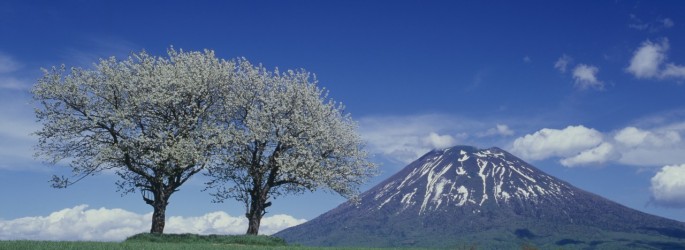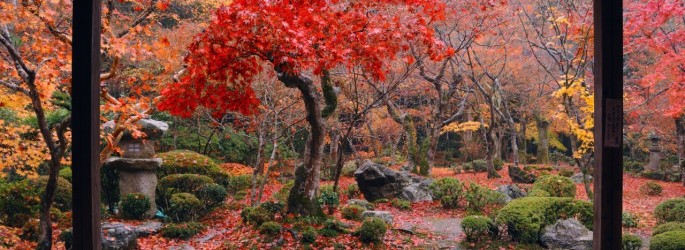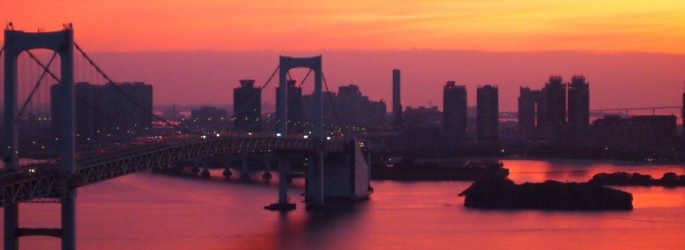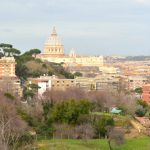The Truth About Travelling To Post-Tsunami Japan
Written by Jaillan Yehia

One year on from the Japanese earthquake and ensuing tsunami and nuclear disaster, what are the issues surrounding travelling to post-tsunami Japan? In this guest post Japanese-born and London-based lecturer Kaori Homma gives her views.
On the 11th March 2011, one of the biggest earthquakes ever recorded hit Japan. The earthquake, measuring 9.0 on the Richter scale, triggered a tsunami which completely devastated much of the north-eastern coastline. The nuclear crisis, caused by damaged power plants in Fukushima, also added to this humanitarian disaster. Media coverage has emphasised the stoic nature of the victims and the financial and logistical capability of the Japanese government but unfortunately the reality is rather far from these portrayals.
The number of people confirmed dead or missing is approximately 20,000, and 260,000 people are still living in temporary emergency accommodation, and even more shockingly the number of people committing suicide is sky rocketing and predicted to reach 50,000 by the end of this year, and we are yet to find out the long-term effect of radiation exposure to the younger population.
One of the most disheartening experiences during the disaster was for local people to see so many foreign nationals fleeing, leaving behind just those who did not have any choice but to stay, so seeing tourists come back is a huge encouragement for the Japanese people, but if I’m completely honest I’m really torn apart between wanting to reassure people that it is now safe to go to this wonderful country and the need to be clear about the issues that they should consider before they plan their travel to Japan. The following doesn’t make easy reading, but this is my personal opinion and advice:
Should Tourists Travel to Japan?
On one level, Japan is the safest place on earth to travel to. The transport system is clean, modern and highly efficient, and the crime rate is very low. However, you might want to take into consideration that Tokyo University Research Team has announced that there is 70% chance a large earthquake hitting right under the Tokyo Bay Area within 4 years, although other research suggests 30 years as the time frame. You have to remember that Japan is a land that sits on the tectonic plate, but that is precisely why there are such lovely natural spas, mountains and scenery on offer in our country, as much as there are technologically advanced cityscapes which often springs to mind when travellers think of Japan.

Japan’s stunning natural scenery
Which Areas Are Safest To Visit?
The UK Government is advising UK nationals not go within 20km of the exclusion zone from Fukushima Nuclear Plant, but there are other areas in Tohoku which also have a high radiation count. My advice is to spend more time in Kansai, Kyushu and Shikoku areas exploring their range of sights including the ancient Kyoto Gardens, the Onsen Hot Springs and Naoshima Contemporary Art Museum. Japan is safe but it does somewhat depend on where you are going, and who you are. For example according to the Japan Travel Advisory Board, radiation levels in Tokyo are safe, but if you are travelling with young children, or if you are pregnant, I personally would choose to go to the Kansai (Western) area instead.

Kyoto
Japan consists of four main islands in the Pacific. They are Honshu (the main island), Kyushu (the south island), Shikoku (the south west island) and Hokkaido (the northernmost island). Main cities like Tokyo and Kyoto are on Honshu and the tsunami hit the north-east coast of this island, and the failed Fukushima nuclear plant is also in this area east. To put things in perspective Tokyo is about 200 km south of Fukushima and Kyoto is further 500km south west of Tokyo.

Tokyo – 200 km south of the original disaster area
Shikoku and Kyushu are both much further south and as the infrastructure is back to normal you can travel anywhere in Japan, but I believe visiting the North Kanto and Tohoku areas does involve a risk factor in relation to the radiation issue. There is also the issue of food safety to consider. The Japanese Government raised its radiation safety limit soon after Fukushima Nuclear Fallout and they have also recently raised the safety limit of infant food from 50 Bq/Kg to 100 Bq/Kg.v. and despite rigorous food safety procedures unsurprisingly Japanese consumers are not convinced by official lines.
Is it seen as insensitive to visit Japan now?
On contrary, your presence as a tourist will be a great encouragement for the locals – one of the most disheartening experiences during the disaster was that so many foreign nationals fled leaving locals behind who did not have any choice but to stay. So to see the return of tourists gives local people some hope and encouragement
Can tourists help by visiting Japan?
Very much so. Not only does tourism give a boost to the stagnating local economy but tourists’ presence shows that people in Japan are not isolated in their experience after the disaster. I think your visit itself would be a great demonstration of human solidarity.
There are also many good local charities which are operating on the ground level effectively and these charities take donations, and some you can give to directly.
So, yes, please come to Japan, but remember to check government travel information websites for safety announcements.
This is a guest post by Kaori Homma. Kaori is a Japanese-born artist and Associate Lecturer at University of Arts London.
Images courtesy of the Japan National Tourism Organisation
Tags: Asia, Japan, travel tips
Trackback from your site.




